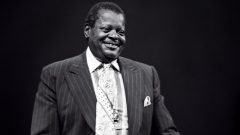Oscar Peterson There’s Oscar Peterson Boulevard and Oscar Peterson Public School in Mississauga, Ontario; Oscar Peterson Square in downtown Toronto; and, in his hometown of Montreal there’s the Oscar Peterson Concert Hall. And, that’s not to mention the 16 honourary… »
Highlights / Portraits of Black Canadians
Find out more about black Canadians who contributed to the building of Canada and who are making their mark every day.
From our archives
Danger, hardship, heroism and tragedy. All are features of black immigration to Canada in the nineteenth century.
The story of black immigration to Canada began 400 years ago with the arrival of the French at Port Royal. John Graves Simcoe, the Lieutenant-Governor of Upper Canada, signed the Act Against Slavery in 1793.
Many black people came to Canada by their own means. But the Underground Railroad, an informal network of people and places organized to help black people escaping slavery, was an important feature of immigration to Canada in the nineteenth century.
It’s estimated that between 20,000 and 40,000 black people arrived in Canada during the first half of the nineteenth century. Some consider that the number could be as high as 60,000.
Radio Canada International has produced a series of vignettes spotlighting some of the black Canadians that have marked the country’s past, as well as those that are marking Canada’s present.
Researchers: Nataly Lague, Audrey Flat
Editors: Suzanne Shugar, Audrey Flat
Translator: Nataly Laguë
Sound recording, sound effects, sound mixing: Angela Leblanc
Producer; casting, music selection: Suzanne Shugar
Executive Producer: Raymond Desmarteau
A Radio Canada International production
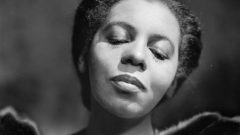
Uncategorized
Portraits of Black Canadians – Episode 16
Portia White The classical concert signer from Nova Scotia achieved international fame World War Second. In Portia White’s hometown of Truro, Nova Scotia there is a monument in her memory. Following her international career she settled in Toronto and taught… »
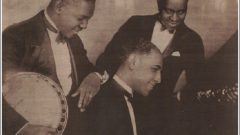
Uncategorized
Portraits of Black Canadians – Episode 15
Lou Hooper Once Oscar Peterson’s piano teacher, Lou Hooper wrote ragtime classics like The Cakewalk, Black Cat Blues, South Sea Strut and Uncle Remus Stomp. Born in 1894, in North Buxton, Ontario, Hooper died in Charlottetown, PEI in 1977 not… »
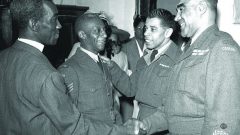
Uncategorized
Portraits of Black Canadians – Episode 14
George Frederick Johnson George Frederick Johnson enlisted in the Canadian military when he was just 16 years old. Cpl. Johnson served with the 10th Canadian Armoured Regiment and later took part in the D-Day landing in Normandy on June 5,… »
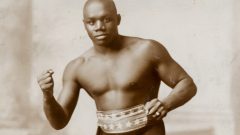
Uncategorized
Portraits of Black Canadians – Episode 13
Sam Langford Samuel Edgar Langford, known as the Boston Terror, is considered by many boxing historians to be one of the greatest fighters of all time. Duration: 2:27
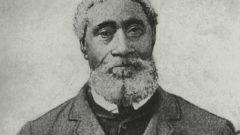
Uncategorized
Portraits of Black Canadians – Episode 12
William Hall Petty Officer William Hall was the first black Canadian man to win the Victoria Cross for his actions at the Relief of Lucknow in 1857. Duration: 2:40
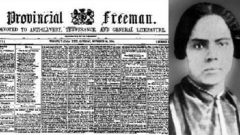
Uncategorized
Portraits of Black Canadians – Episode 11
Mary Ann Shadd Cary Today, we bring you the story of Mary Ann Shadd Cary. She moved to Canada from the United States in 1851 and eventually began editing The Provincial Freeman, a weekly newspaper first printed on March 24, 1853.… »
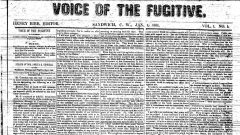
Uncategorized
Portraits of Black Canadians – Episode 10
The Press and the Anti-Slavery Movement Today we bring you the story of 19th century Canadian publications such as Voice of the Fugitive and The Globe advocating for freedom from bondage. Duration 3:13
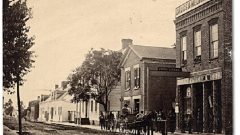
Uncategorized
Portraits of Black Canadians – Episode 9
Anti-slavery movement in Canada The Anti-Slavery Society of Canada was formed in Canada West (now Ontario) in 1851 to promote the global abolition of slavery and provide relief to African American refugees seeking freedom in Canada. Duration 2:40
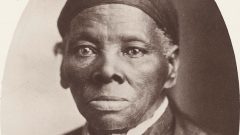
Uncategorized
Portraits of Black Canadians – Episode 8
Harriet Tubman Today we bring you the story of Harriet Tubman. She was a courageous “conductor” on the Underground Railroad, who led hundreds of American slaves to freedom in Canada. Duration 2:59
